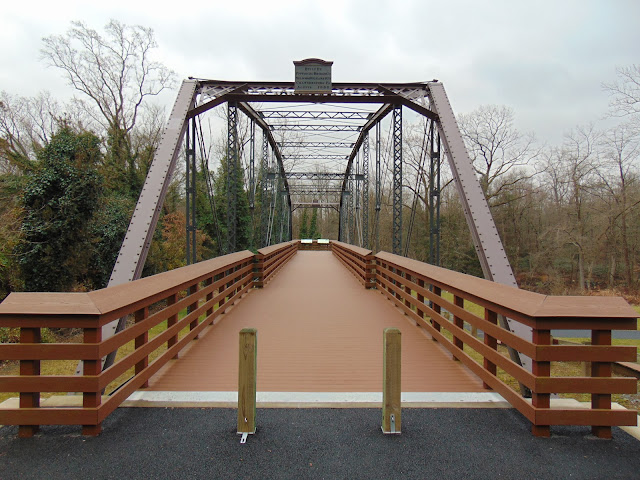Along an active Norfolk Southern Railroad line situated on the east edge of town is the Greenville Railroad Park and Museum, a must-see for railroad buffs and history buffs alike. Traveling along PA 358, it can’t be missed, as a steam switch engine towers beside the street, along with its tender, three cabooses, an ore car and a 1904 patio flat car. The Greenville Railroad Park & Museum was started in 1985 by a group of volunteers interested in preserving and promoting the robust railroad history in Greenville, Pennsylvania. Greenville owes much to the canals and railroads that once kept the town a busy place. Those modes of transportation allowed the borough of Greenville to grow to 10,000 people in 1940. However, with the decline of the railroads and related industries, the population has dropped by about half that amount. Greenville was home to a number of railroad shops. First, the Pittsburgh, Shenango & Lake Erie Railroad began construction of the shops in 1893, but the largest portion of the complex was added in several stages by its successor, the Bessemer & Lake Erie Railroad. The last major structure to be added to the railroad shops in Greenville was the Diesel Shop in 1951.
Greenville is a natural fit to have a railroad park and museum. The property that the park and museum are situated upon was donated by Mr. Marc Rinella and its artifacts have been kindly donated to the museum over the years. The Bessemer Railroad donated the 1936 steam engine, an iron ore car and caboose. Over the next few years a group of very dedicated volunteers built the museum building, the operator’s office/gift shop, the speeder shed, the maintenance shed and completely landscaped the grounds. Along the way two more cabooses and a flat car were donated to the museum.
I made a visit to the Greenville Railroad Park and Museum once when I was just passing through Greenville. While my itinerary did not include visiting the museum, seeing all of the rail cars beckoned me to stop and walk around. Since I'm not much of a railroad buff, I appreciated that there were placards that explained what I was looking at. The museum is open seasonally and admission is free (but donations are welcome).
 |
Duluth, Missabe and Iron Range car, which was probably used to carry iron ore. Andrew Carnegie established the Pittsburgh, Bessemer & Lake Erie Railroad Company in 1897 to carry iron ore from Conneaut, Ohio to Carnegie Steel Company plants in and around Pittsburgh, Pennsylvania. Forming a link between his plants and the Great Lakes ore boats arriving in Conneaut from Minnesota's Mesabi Iron Range, it was part of his plan to form a complete, vertically integrated steel company.
|
 |
| This ore car, which could haul 70 tons, was built in 1952 at the Greenville Steel Car Company, another firm which made Greenville a major railroad town. The rail car hauled ore from Conneaut to steel mills in Pittsburgh. |
 |
Bessemer Caboose #1985. There is a placard on the caboose that reads that the caboose was built in 1956 and first used by the Elgin, Joliet and Eastern Railroad. It was then leased by the Bessemer and Lake Erie Railroad from 1966 until its retirement in 1982.
|
 |
Caboose and ore car.
|
 |
Wheeling and Lake Erie Railroad Caboose #0205. The placard on the caboose reads that this was one of sixty cabooses built by the Wheeling and Lake Erie Railroad at their Toledo Ironville Shops.
|
 |
Wheeling and Lake Erie Railroad caboose as well as a Union Pacific Railroad caboose. There is also an open car here so park visitors can experience sitting in a rail car.
|
 |
The front of Steam Engine #304/#604. The placard on the engine reads that it was built in 1936 by Baldwin Locomotive Works in Eddystone, Pennsylvania and was one of the largest steam switch engines ever built. The engine was built originally as #304 for the Union Railroad to work the Pittsburgh steel mills. It was sold to the Duluth, Missabe and Iron Range Railroad in 1949 and renumbered #604. The engine was used in Minnesota to push ore jennies onto the Duluth docks and drag empties up Proctor Hill. The engine was retired in 1958 and stored by the Bessemer in Greenville for future donation, who donated the engine to the park in 1985.
|
 |
Now to enjoy some views of the rail cars.
|
 |
What I can best describe as mile markers, usually to note distance to the end of the railroad line or to a major railroad hub.
|
 |
Plaque honoring the Chicago Bridge and Iron Works' Greenville plant, which was open from 1911 through 1982. This plant stood opposite the Bessemer Shops.
|
 |
Railroad traffic control devices.
|
How to Get There:
Sources and Links:
Greenville Museum Alliance - Greenville Railroad Park & Museum
HawkinsRails - Greenville Railroad Park
MyTownNEO - Kaleidoscope: Greenville heritage began with a canal and railroads
Historic Structures - Bessemer & Lake Erie Railroad Maintenance Shops, Greenville Pennsylvania
































Comments
Post a Comment